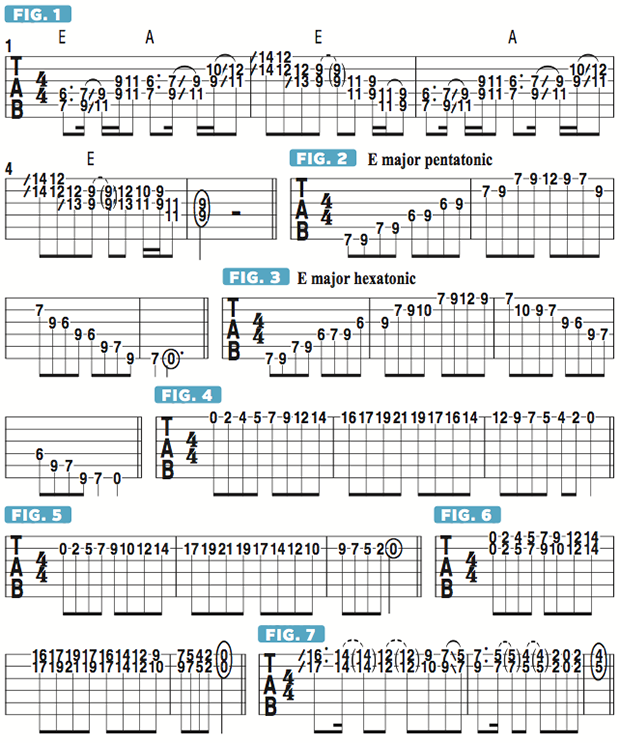How to Create Sweet-Sounding Twin Leads with the Major Hexatonic Scale

A signature element in many great, enduring rock songs is the use of harmonized single-note lead guitar lines.
Examples include Thin Lizzy’s “The Boys Are Back in Town,” “Reelin’ in the Years” by Steely Dan, the Eagles’ “Hotel California” and the Allman Brothers Band’s “Blue Sky,” “Whipping Post,” “Ramblin’ Man,” “Hot ’Lanta,” “Revival” and many others.
Dickey Betts, composer of so many of these classic ABB tunes, has made harmonized single-note leads a part of his own signature sound, and for a great many of these harmonized lines, he has relied on the major hexatonic scale, also known as hexatonic major.
In fact, many players refer to the scale as “the Dickey Betts scale” because his music is so closely associated with it. In this lesson, I will show you how to create sweet harmony leads with this scale, in the style of Betts.
One of Dickey’s most well-known and immediately recognizable usages of major hexatonic harmony leads is the intro riff to “Blue Sky.” FIGURE 1 offers a part played along these lines, arranged for one guitar, wherein the lower note represents the melody and the higher note represents the harmony, which stays diatonic to (within the scale structure of) E major hexatonic (E F# G# A B C#).
The best way to learn the major hexatonic scale is to first analyze the more commonly used five-note major pentatonic scale, upon which it is based. FIGURE 2 illustrates E major pentatonic (E F# G# B C#), as played in seventh position. The intervallic structure of this scale is one (the root), major second, major third, perfect fifth and major sixth.
To get major hexatonic, simply add the perfect fourth to this structure, which will result in an intervallic spelling of one (the root), major second, major third, perfect fourth, perfect fifth and major sixth, as illustrated in the key of E in FIGURE 3.
All the latest guitar news, interviews, lessons, reviews, deals and more, direct to your inbox!
By simply adding the fourth to this scale, now the triadic chord tones of E major (E G# B) and A major (A C# E) are present, making this scale perfectly suited for soloing over a repeating I-IV (one-four) chord progression in the key of E (E to A), as is the case with “Blue Sky.”
Whereas the type of interval remains consistent when diatonically harmonizing a seven-note scale, such as E major, for example, harmonized in thirds, fourths, fifths, etc., when harmonizing the six-note major hexatonic scale, the intervallic relationship will switch from thirds to fourths at certain points due to the wider gaps between some of the notes.
FIGURE 4 illustrates E major hexatonic played up and down the high E string, and FIGURE 5 illustrates the same scale played entirely on the B string, starting from B, the fifth. If we play both strings together, the result is shown in FIGURE 6: the first two harmonies are fourths, followed by four thirds, major or minor, then everything repeats an octave higher, when you get to the 12th fret.
FIGURE 7 offers an example of how these major hexatonic harmonies might be used in a “Blue Sky”–inspired melody. Once you have the basic idea, try inventing some two-note harmonized lead melodies of your own.

Guitar World Associate Editor Andy Aledort is recognized worldwide for his vast contributions to guitar instruction, via his many best-selling instructional DVDs, transcription books and online lessons. Andy is a regular contributor to Guitar World and Truefire, and has toured with Dickey Betts of the Allman Brothers, as well as participating in several Jimi Hendrix Tribute Tours.

